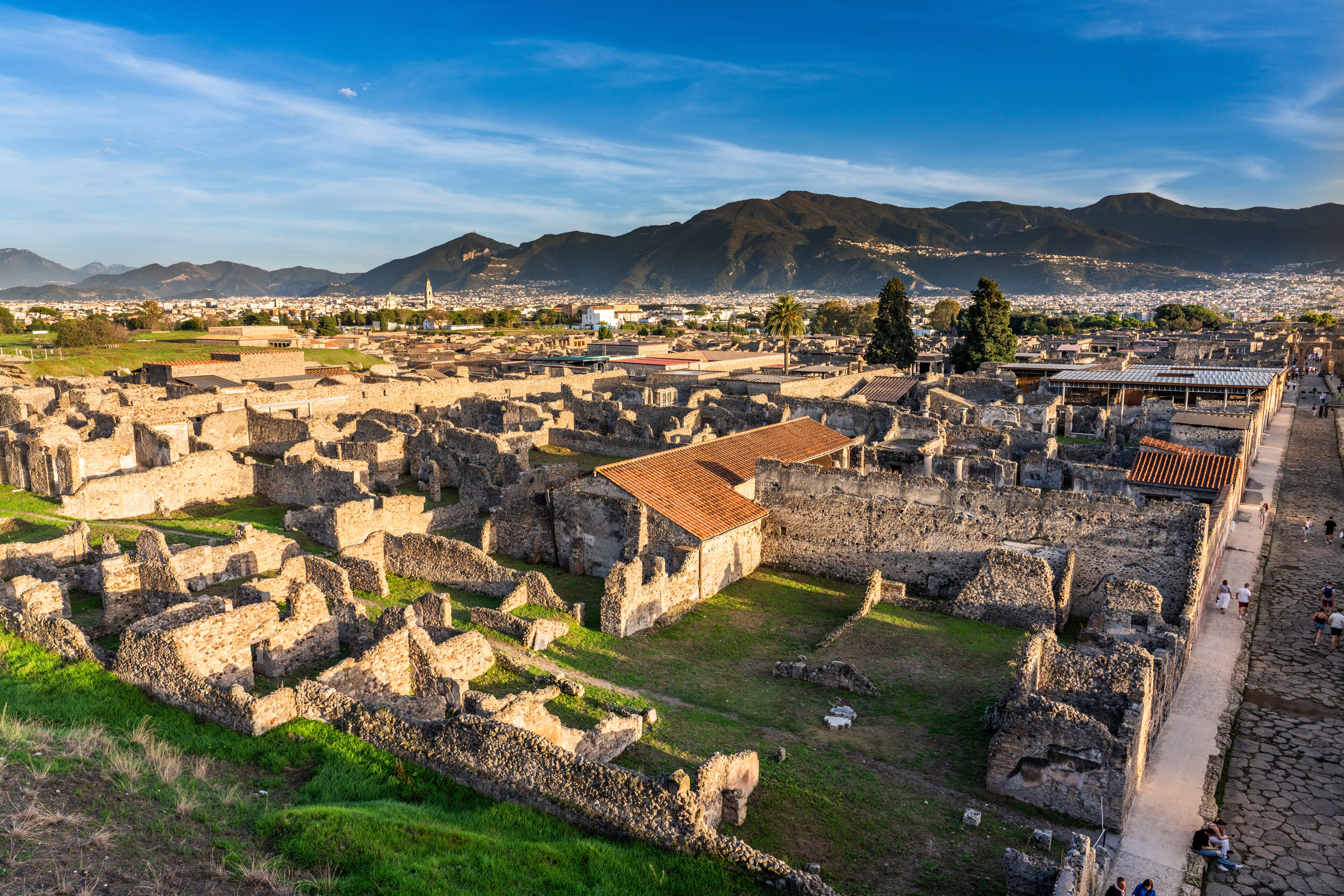Historical Significance

Region II is incredibly important in understanding Pompeii's history. This area was a centre of social, economic, and cultural activities. It has public buildings, private homes, and burial sites that together tell the story of a lively and complex society.
The buildings here show the architectural skill and artistic talent of the Pompeians. They reflect the people's daily lives, social structures, and religious beliefs.
Excavations in Region II have provided a lot of information about life in ancient Pompeii. These digs have been happening for many years. Even though much has been found, archaeologists keep making new discoveries. These findings help us learn more about this amazing city.
Excavation History

The excavation of Region II started in the 18th century and is still ongoing. Various archaeological efforts have uncovered important parts of the area, but some sections are still being worked on. This ongoing excavation shows how important Pompeii is as an archaeological site and the dedication to preserving its history.
Key Sites in Region II

-
Amphitheater
The Amphitheater in Pompeii, built in 70 BC, is the oldest known Roman amphitheater. It could hold up to 20,000 people from Pompeii and nearby towns. Located on the outskirts, it was easy for crowds to gather for events like gladiator battles.
The amphitheater had different sections for different social classes. There were lower, middle, and upper parts. Dignitaries sat in the lower central area, while the general public sat higher up.
One interesting feature was the velarium, a cover over the theater to protect it from rain or sun. You can still see traces of the rings used to hold the canopy.
In 59 AD, a fight at a gladiator event led the Senate of Rome to close it for ten years. They reopened it in 62 AD after a severe earthquake hit Pompeii. Excavations of the Amphitheater happened in 1748 and 1813-1814.
-
House of Venus in the Shell
The House of Venus in the Shell gets its name from a beautiful fresco in the garden depicting Venus in a shell. Built in the 1st century BC, the house has undergone many changes. The garden is the focal point, surrounded by frescoed rooms.
The famous fresco shows Venus attended by Cupids and adorned with jewelry. The house was damaged during WWII air raids. Excavations took place between 1933-1935 and 1951-1953.
-
Praedia of Julia Felix
The Praedia of Julia Felix is a large complex, also known as an "urban villa." It includes a big garden, multiple living areas, baths, and dining areas. Julia Felix, the owner, rented out parts of her property and allowed public use of her private baths.
This villa provides a glimpse into the luxurious lifestyle of its residents. Excavations were conducted in several stages: 1754-1757, 1912, 1933-1934, and 1951-1952.
The house of Octavius Quartius

The House of Octavius Quartio is notable for its large garden, which has been replanted with native plants and trees. The house is like a smaller version of a grand aristocratic villa. It has a traditional atrium and a garden with two artificial waterways and waterfalls.
Interesting features include references to the goddess Isis in wall decorations and statues. Excavations took place in 1916, 1918, 1921, 1933-1935, and 1973.
-
The Large Palaestra
The Large Palaestra, or exercise ground, is a significant public space in Region II. This vast area was used for athletic training and social gatherings. Surrounded by porticoes, it features a central swimming pool and numerous statues.
The Large Palaestra was a place where citizens could engage in physical exercise, relax, and socialize. This reflects the importance of fitness and leisure in Roman culture.
-
Nocera Gate and Walls
The Nocera Gate provided access to the town of Nocera and is located in the southeast part of Pompeii. It is connected to the city walls, offering protection. The gate's design dates back to the Samnite era (4th century BC) but has undergone various restorations.
It features a room with a barrel vault and two bastions protecting the entrance. Excavations were carried out in 1799, 1814, 1952, 1954, and 1984.
-
House of the Garden of Hercules
The House of the Garden of Hercules is a terraced home with a large garden. Pollen analysis suggests the garden was used to cultivate flowers like roses, violets, and lilies. These flowers were used to make perfumes, stored and sold in containers found on-site.
The house dates back to the 3rd century BC and features a small statue of Hercules. Excavations were conducted in 1953-1954, 1971-1973, and 1984.
-
Necropolis of Nocera Gate
The Necropolis of Nocera Gate is located along a road parallel to the city walls. It features several burial monuments and tombs, dating from the beginning of the 1st century BC to 79 AD. Notable tombs include that of Eumachia, a priestess who funded a large building in the Forum. This burial ground has many monuments and tombs, showing how ancient Pompeians practiced funerals and their beliefs about death.
The tombs vary in size and style, indicating the social status and wealth of the individuals buried there. The Necropolis offers a solemn reminder of the city's inhabitants and their efforts to honor their deceased. Excavations took place in 1954-1956 and 1996-1997.